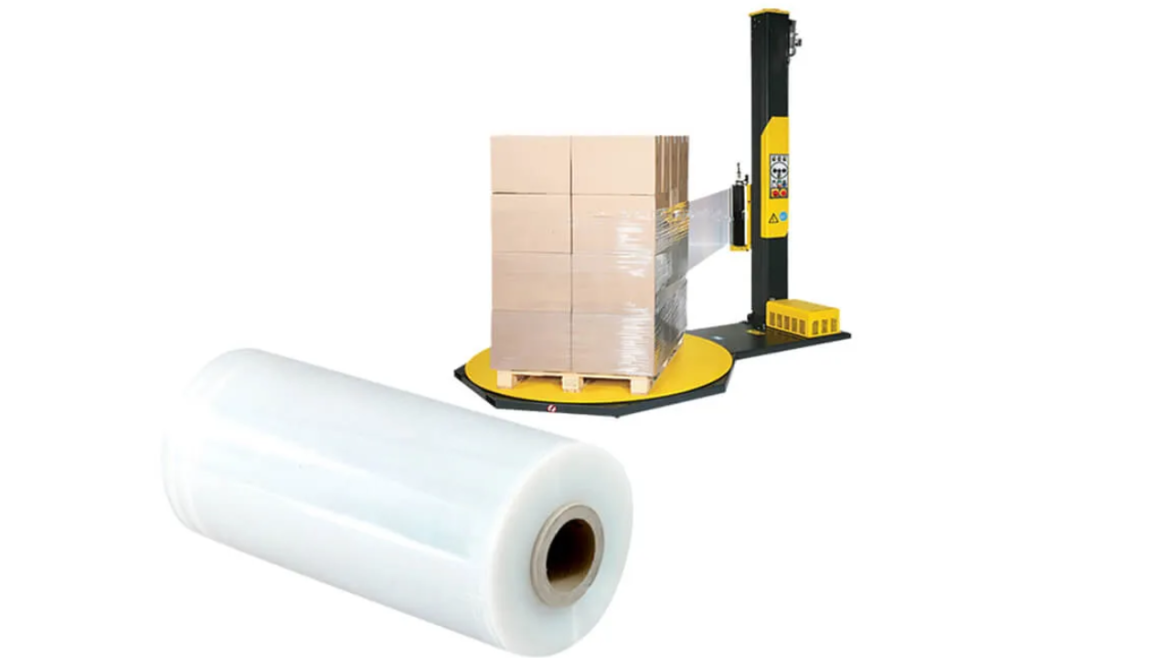Stretch Wrap is a thin, elastic-plastic film frequently manufactured from polyethylene. Products are locked and secured onto a pallet using it. When the stretch film is wrapped around a pallet, stress is applied, causing the film to extend and produce a force that keeps it in place. Stretch wrap can also be recycled, but first, make sure that soft plastics are accepted at your recycling facility. Stretch wrap is typically utilized to lessen issues like product damage, tampering, and loss that might happen during transit.
Typically used in low-volume packing processes, hand stretch film rolls are specifically made to be applied manually. Stretch wrapping film from KEEPTOP provides great tear resistance, low haze, and a silent unwind. Excellent anti-piercing and stretching abilities are further qualities. Excellent puncture resistance, strong self-adhesion, and lightweight. The cost is also reasonable. Keep top offers stretch wrap production and wholesale services.
Different Types of Stretch Wrap
Depending on the load size, performance requirements, and budget, there are many different kinds of stretch wraps, and they are all ideal for addressing particular needs.
Pre-Stretch Film
Pre-stretch film: Pre-stretching is a manufacturing process that involves stretching the film to raise its tensile strength, improve load stability, cut waste, and lower the cost of stretch packaging. Can be applied manually or with stretch wrap machines, which can speed up wrapping considerably.
Cast Stretch Film
Gives a smooth surface without additives that have great optics, gloss, strength, and cling. To stop goods on pallets from shifting while they are being transported, a strong film that only adheres to itself has been used. Due to its versatility, this pallet wrap is popular in the food business.
Blown Stretch Film
The process of blown extrusion is used to make blown stretch films. These are often utilized for higher, irregular loads and applications needing excellent puncture and tear resistance. When the reels unwound, they frequently made more noise.
Selection of the Best Stretch Wrap
The products you are trying to wrap will determine the best stretch wrap for your company. You should take the following factors into account while choosing the ideal stretch film:
Performance
It’s important to choose a stretch film that offers the proper yield strength and performance for the loads being wrapped. The amount of stress that a stretch film can bear without irreversibly deforming into a plastic shape is known as yield strength. A stretch film will elastically deform before it reaches the yield point, but if the force is removed, it will revert to its former shape.
Overlapping
Using polythene top sheets, you can use this approach to cover the top of your pallet. As a result, your products are protected, and the pallet burden is pushed beneath them. It is advised that users allow a 50% overlap when layering hand-applied films. Regardless of the film’s width, users who are utilizing machine-applied films should allow a 50mm overlap.
Neck down
When a film is stretched, the dispensing roll width is lost, and the film narrows. Neck down limits the amount of coverage each wrap offers, which increases the likelihood that additional wrap rotations and film will be required to completely wrap a cargo or pallet.
Time Use and Cost Use
Smaller or irregular stretch film wrapping requirements are best handled by hand. For instance, stretch wrap wrapped by hand will be more than adequate if you are moving your home or office. In contrast, the introduction of machine wrapping might ultimately result in time, resource, and packaging material savings.
Conclusion
Stretch wrap comes in a different range of thicknesses and widths. It is therefore the ideal option for ensuring that your products are safeguarded during transit, lowering the possibility of damage, tampering, and loss. The stretch wrap helps keep the package clean and dry and prevents injury to the product.

